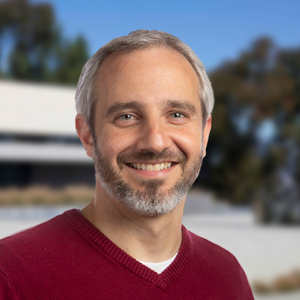Source: Interfolio F180

Gabriel Lander, PhD
Research Focus
We work to develop methodologies that expand the limits of achievable resolution through optimized specimen preparation and cryo-EM data collection strategies, as well as novel image processing algorithms. Combining these cryo-EM techniques with biochemical, biophysical, and cellular studies, we aim to unravel the intricate molecular dynamics governing cellular homeostasis and stress responses. Our work primarily focuses on the mechanisms that underlie protein degradation, which is a fundamental process that plays a paramount role in upholding cellular equilibrium and function. Many of these processes are orchestrated by large-scale conformational rearrangements, protein oligomerization, or motions of molecular motors, which together control the selection, recruitment, unfolding, and elimination of targeted proteins. By complementing cryo-EM structure determination with complementary computational and experimental studies, we describe the intricate connections between molecular mechanisms and human diseases. We also explore the role of small molecules in modulating these intricate systems with potential therapeutic effects. By understanding how these molecules impact processes such as protein ubiquitination and degradation, we aim to unlock novel avenues for targeted interventions that could have far-reaching implications disease treatment.
Education
Ph.D. (Biophysics), The Scripps Research Institute, 2009B.S. (Biochemistry), Binghamton University, 2002
Awards & Professional Activities
2019 Protein Science Young Investigator, Protein Society2018 Amgen Young Investigator Award, Amgen
2017 Baxter Young Investigator Award, Baxter
2014 NIH Director's New Innovator Award, National Institutes of Health
2014 PEW Scholar Award, The PEW Charitable Trusts
2014 Searle Scholar Award, Searle Scholars Program
2013 Dale F. Frey for Breakthrough Scientists, Damon Runyon Foundation
2012 Merton R. Bernfield Memorial Award, American Society of Cell Biology
2012 Directors Award for Exceptional Achievement, Lawrence Berkeley National Lab
2012 George Palade Award, Microscopy Society of America
2011 Outstanding Achievement Award, Lawrence Berkeley National Lab
2010 Damon Runyon Cancer Research Foundation Fellowship, Damon Runyon Foundation
2008 ARCS Fellowship
2007 Carl Storm Fellowship Award, Gordon Research Conferences
2006 FASEB Young Investigator Award
Selected Publications
Yang, Jie; Baron, Kelsey R.; Pride, Dani E.; Schneemann, Anette; Guo, Xiaoyan; Chen, Wenqian; Song, Albert S.; Aviles, Giovanni; Kampmann, Martin; Luke Wiseman, R; Lander, Gabriel C. DELE1 oligomerization promotes integrated stress response activation. 2023.
Watson, Edmond R.; Novick, Scott; Matyskiela, Mary E.; Chamberlain, Philip P P.; H de la Peña, Andres; Zhu, Jinyi; Tran, Eileen; Griffin, Pat R.; Wertz, Ingrid E.; Lander, Gabriel C. Molecular glue CELMoD compounds are regulators of cereblon conformation. 2022, 378, 549-553.
Swan, Jeffrey A.; Sandate, Colby R.; Chavan, Archana G.; Freeberg, Alfred M.; Etwaru, Diana; Ernst, Dustin C.; Palacios, Joseph G.; Golden, Susan S S.; LiWang, Andy; Lander, Gabriel C.; Partch, Carrie L. Coupling of distant ATPase domains in the circadian clock protein KaiC. 2022, 29, 759-766.
Shin, Mia; Watson, Edmond R.; Song, Albert S.; Mindrebo, Jeffrey T.; Novick, Scott J.; Griffin, Pat R.; Wiseman, R L.; Lander, Gabriel C. Structures of the human LONP1 protease reveal regulatory steps involved in protease activation. 2021, 12, 3239.
de la Pena, A. H.; Goodall, E. A.; Gates, S. N.; Lander, Gabriel C.; Martin, A. Substrate-engaged 26S proteasome structures reveal mechanisms for ATP-hydrolysis-driven translocation. Science 2018, 362.
[View]
Puchades Garcia, Cristina; Rampello, A. J.; Shin, Mia; Giuliano, C. J.; Wiseman, Rockland L.; Glynn, S. E.; Lander, Gabriel C. Structure of the mitochondrial inner membrane AAA+ protease YME1 gives insight into substrate processing. Science 2017, 358.
[View]

